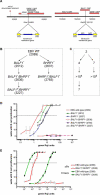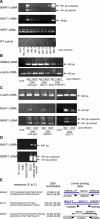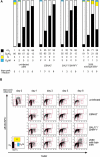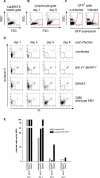Epstein-Barr virus provides a new paradigm: a requirement for the immediate inhibition of apoptosis
- PMID: 16277553
- PMCID: PMC1283332
- DOI: 10.1371/journal.pbio.0030404
Epstein-Barr virus provides a new paradigm: a requirement for the immediate inhibition of apoptosis
Abstract
DNA viruses such as herpesviruses are known to encode homologs of cellular antiapoptotic viral Bcl-2 proteins (vBcl-2s), which protect the virus from apoptosis in its host cell during virus synthesis. Epstein-Barr virus (EBV), a human tumor virus and a prominent member of gamma-herpesviruses, infects primary resting B lymphocytes to establish a latent infection and yield proliferating, growth-transformed B cells in vitro. In these cells, 11 viral genes that contribute to cellular transformation are consistently expressed. EBV also encodes two vBcl-2 genes whose roles are unclear. Here we show that the genetic inactivation of both vBcl-2 genes disabled EBV's ability to transform primary resting B lymphocytes. Primary B cells infected with a vBcl-2-negative virus did not enter the cell cycle and died of immediate apoptosis. Apoptosis was abrogated in infected cells in which vBcl-2 genes were maximally expressed within the first 24 h postinfection. During latent infection, however, the expression of vBcl-2 genes became undetectable. Thus, both vBcl-2 homologs are essential for initial cellular transformation but become dispensable once a latent infection is established. Because long-lived, latently infected memory B cells and EBV-associated B-cell lymphomas are derived from EBV-infected proapoptotic germinal center B cells, we conclude that vBcl-2 genes are essential for the initial evasion of apoptosis in cells in vivo in which the virus establishes a latent infection or causes cellular transformation or both.
Figures




References
-
- Cuconati A, White E. Viral homologs of BCL-2: Role of apoptosis in the regulation of virus infection. Genes Dev. 2002;16:2465–2478. - PubMed
-
- Boya P, Pauleau AL, Poncet D, Gonzalez-Polo RA, Zamzami N, et al. Viral proteins targeting mitochondria: Controlling cell death. Biochim Biophys Acta. 2004;1659:178–189. - PubMed
-
- Benedict CA, Norris PS, Ware CF. To kill or be killed: Viral evasion of apoptosis. Nat Immunol. 2002;3:1013–1018. - PubMed
Publication types
MeSH terms
Substances
Grants and funding
LinkOut - more resources
Full Text Sources
Other Literature Sources

